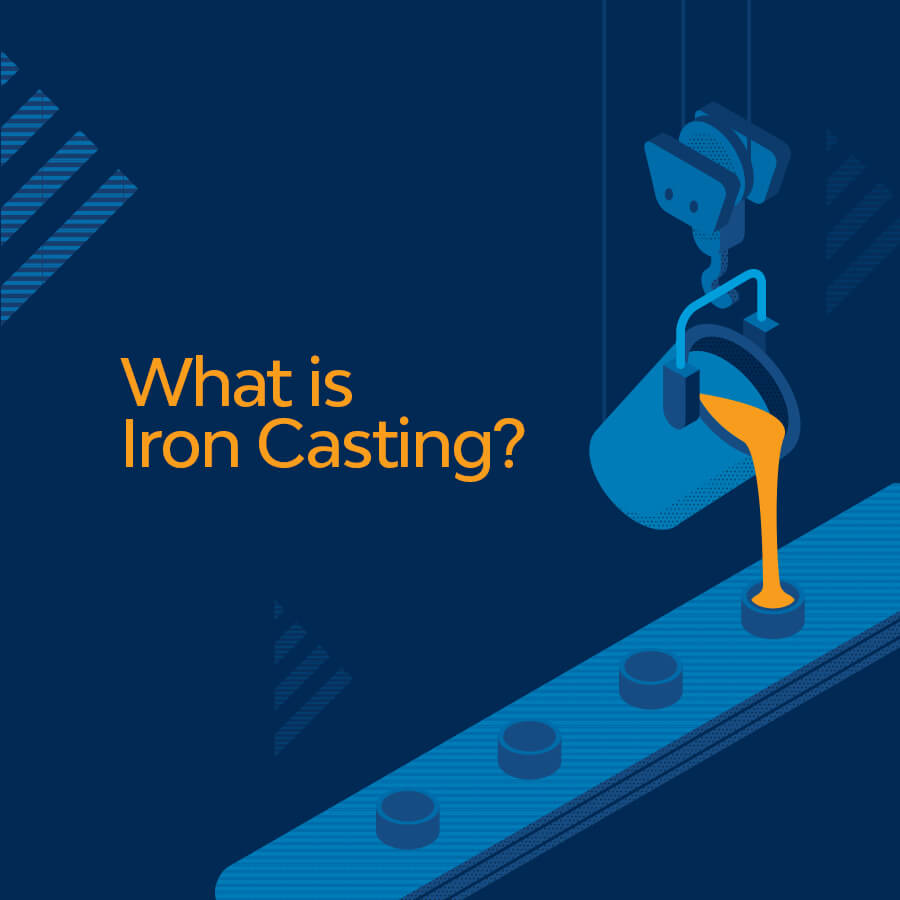Ever wondered about the magic behind durable machinery and intricate metal designs? or Ever marveled at how a simple metal chunk transforms into a work of art? Well, let me unravel the mystery for you – it’s all about iron casting!
Cast iron manufacturing process involves pouring molten material into a mold with a hollow cavity of the desired shape. As it cools and solidifies, voila! You’ve got yourself a casting, ready to be released from its mold and take center stage in various industries.
Now, let’s talk numbers. The global iron casting market stood strong at USD 10.2 billion in 2022. The projection, which shows a significant increase to USD 15.13 billion by 2030 and a consistent compound annual growth rate (CAGR) of 5.8%, is the real kicker. The Asia Pacific region emerges as the foremost market with the most rapid growth, creating favorable conditions for advancements and innovative concepts.
Types of Iron Used in Casting Process
Well, welcome to the world of iron casting, where not all irons are created equal. There are different types of iron, each with its unique casting process and a specific role in the iron casting process.
Gray Iron
Now, let’s zoom in on one key player – Gray Iron. Ever noticed how engine blocks, pipes, and even your trusty cookware seem to withstand the test of time effortlessly? That’s the magic of Gray Iron at play.
Gray Iron earns its stripes through impeccable castability and a knack for damping vibrations. Gray Iron steps into the spotlight in the automotive industry, forming the backbone of engine blocks and brake discs. Walk into a waterworks system, and you’ll find it in pipes, valves, and fittings, holding everything together with quiet strength. Even your kitchen owes a debt to Gray Iron for those robust and reliable cookware essentials.
So, here’s the takeaway – Gray Iron isn’t just a material; it’s the backbone of endurance in our daily lives, quietly supporting structures and systems with a resilience that speaks volumes.
Ductile Iron
Imagine the iron casting process as a creative stage, and Ductile Iron steps into the spotlight with a unique set of skills.
So, what’s its role? Think of Ductile Iron as the flexible artist in the cast iron manufacturing process. When molten metal takes center stage, Ductile Iron showcases its incredible ability to bend and stretch without losing its strength.
Ductile Iron steps up in the iron casting process, forming the backbone of water and sewer systems. Its corrosion-resistant nature makes it the go-to material for pipes, valves, and fittings, ensuring a reliable flow of water and efficient wastewater management.
White Iron
White Iron is recognized for its robust characteristics, primarily its hardness and wear-resistant properties. Within the manufacturing process of cast iron, White Iron distinguishes itself through a specific cooling method that facilitates rapid solidification, resulting in a dense and durable structure.
Its role in the cast iron process is pivotal during the cooling phase. The accelerated cooling process transforms White Iron into a material known for its resilience and durability, contributing to its distinctiveness among other cast iron variants.
White Iron finds prominence in scenarios where durability is paramount. Notably, it is utilized in machinery components such as grinding balls and mill liners, which encounter abrasive materials regularly. In these applications, White Iron serves as a frontline defense, displaying exceptional resistance against wear and tear.
Cast Iron Process
The iron casting process is a systematic and intricate series of steps that transform raw materials into durable cast iron products. Let’s navigate through each stage with a focus on the formal aspects of the manufacturing process.
Pattern Making
In the meticulous dance of the cast iron manufacturing process, we commence with a pivotal step: Pattern Making. This initial phase is akin to laying the foundation for a sturdy structure.
Here, craftsmen diligently craft a pattern, a precise replica of the final cast iron product. This pattern, meticulously fashioned from materials such as wood or metal, assumes the role of a guiding template for the subsequent stages in the iron casting process. It ensures that the cast iron product, in its final form, faithfully mirrors the intended design and specifications.
Mold Preparation
Moving forward in the manufacturing process of cast iron, the phase of mold preparation serves as a bridge between the crafted pattern and the tangible form of the final product. Typically crafted from sand or other mold materials, the mold becomes a negative impression of the envisioned cast iron piece. This negative space will soon cradle the molten iron, giving it shape and form.
It’s a critical juncture in the cast iron process, where the artistry of pattern making converges with the technical precision of mold preparation, laying the foundation for the molten ballet that follows.
Melting the Iron
This is a stage akin to the furnace’s transformative embrace, where raw iron undergoes a metamorphosis into the molten material that will shape the cast iron product. In this crucial step, the furnace becomes the crucible of change, subjecting raw iron to soaring temperatures until it succumbs to a liquid state. The result? Molten iron, is a malleable and dynamic substance ready to assume the form dictated by the patiently crafted mold.
his phase serves as the heartbeat of the cast iron manufacturing process, where the raw material transcends its solid nature, embracing a molten state ready to bring the envisioned cast iron product to life.
Pouring
With the molten iron at its peak of malleability, craftsmen undertake the meticulous task of pouring it into the patiently prepared mold. This is the balance of control and finesse in the cast iron process. The molten material obediently takes the shape of the pattern, beginning its transformation into the tangible embodiment of craftsmanship.
The careful pouring ensures that the molten iron fills every nook and cranny of the mold, leaving no room for error. It’s a delicate balance, where the fluidity of the molten iron meets the structured confines of the mold.
Cooling and Solidification
Following the meticulous pouring of molten iron into the mold, the temperature begins to relinquish its hold. As the molten metal loses its fiery intensity, it obediently yields to the cooling embrace of the mold. This gradual cooling is more than a mere physical process; it’s a symphony of temperature gradients determining the structural destiny of the cast iron.
n essence, cooling and solidification is the defining moment in the iron casting process where the molten iron freezes into a structured pose, each cooling degree shaping the cast iron with precision. It’s a testament to the harmony of science and craftsmanship, ensuring that the cast iron emerges from this phase with the integrity and strength required for its intended purpose.
Shaking Out
Upon completion of the cooling and solidification act, the cast iron, now in its definitive form, awaits liberation. shaking out is the unveiling, where the structured cast iron creation is gently separated from the residual mold material.
The shaking out process is more than mere physical separation; it’s the tender transition from the cast iron’s nascent stage to a standalone entity.
Cleaning and Finishing
Once liberated from the mold through the artful process of shaking out, the iron casting process undergoes a thorough cleaning regimen. This isn’t a mere wipe-down; it’s a meticulous removal of any lingering vestiges of the mold material that clung to the surface during its formative phase.
Following this, cast iron enters the realm of finishing processes. The attention to detail during the cleaning and finishing stages not only refines the surface but also contributes to the overall quality assurance of the cast iron.
Inspection and Quality Control
>As the freshly finished cast iron product emerges from the crucible of production, it undergoes a rigorous inspection process. This is a systematic evaluation where every detail, dimension, and characteristic is scrutinized against the predetermined specifications and standards set forth by the iron casting process.
It is ensured that each contour, each nuance, aligns seamlessly with the intended design and functionality. This phase is the guardian of quality, standing as the final barrier between a crafted creation and its entry into the realm of practical application.
It’s a pledge to deliver a cast iron product that not only meets but surpasses the stringent standards of the manufacturing process of cast iron.
Conclusion
Spanning across diverse sectors, Mahadev Precision Cast emerges as a versatile force for iron casting process. Our commitment to excellence resonates in our production capacity, reaching up to 3 tons, showcasing our capability to meet the diverse and evolving demands of precision casting.
We thrive on pushing boundaries and adapting to the dynamic currents of market trends. Challenging our existing operations and renovating our technology are not just practices; they are strong guidelines engrained in our philosophy to meet the ever-changing demands of the industry.










